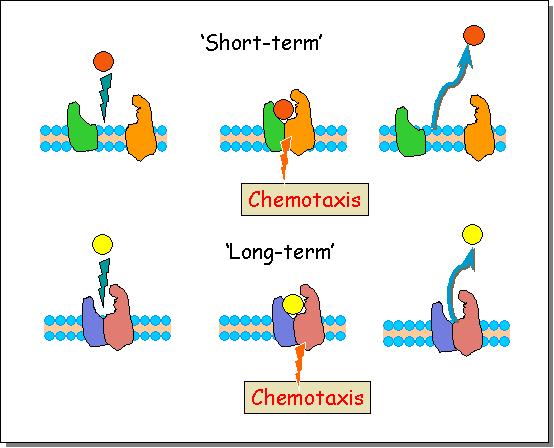Specific,
ligand-receptor interactions of chemotaxis are used to select subpopulations of
cells possessing high chemotactic responsiveness. This novel technique -
described by our group - is available for isolation of subpopulations with high
chemotactic responsiveness and provides the theoretical possibility to analyse
receptor dynamics in the offspring generations (Kõhidai
and Csaba, Cytokine, 10: 481, 1998)
Scheme of chemotactic selection
After the first
chemotaxis assay the selected group of these responsive cells are cultured in
neutral environment, containing no selector ligand for relatively long periods
up to the cell-cycle of the investigated cell type. In Tetrahymena by the end of
the one week culturing with consecutive transfers, about 70th generation of the
starter cells are available. At that time we can evaluate the durability of the
ligand related receptors by repeated chemotaxis assays.

Lecture
►
Membrane dynamics of chemotactic selection
Combinations of
testing the selected and non-selected (control) cells with selector or reference
ligands provides information about whether the receptors triggered by the tested
chemoattractant ligand have short- or long-term dynamics in the
investigated system. Both signaling backgrounds are theoretically conceivable:
presence of the chemotactic ligand might induce an ad hoc, transient
assembly of receptor components (short-term responsiveness) as well as the
whole complexes might be present as genetically determined components of the
membrane (long-term responsiveness). In the second case the chemotactic responsiveness is more durable and we can get
increased chemotactic responses by consecutive chemotactic selections (Kõhidai
et al. 2000).

Hypothetical scheme of receptor dynamics of short- and long-term chemotactic
responsiveness. In short-term responsiveness ad hoc components of the
membrane are assambled for a transient period and disassembled following the
release the ligand, while in the ‘long-term’ type constitutive complexes of the
membrane are working as chemotaxis receptors.